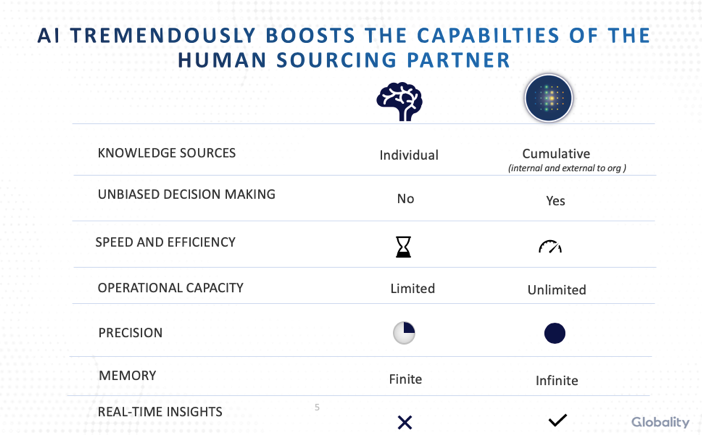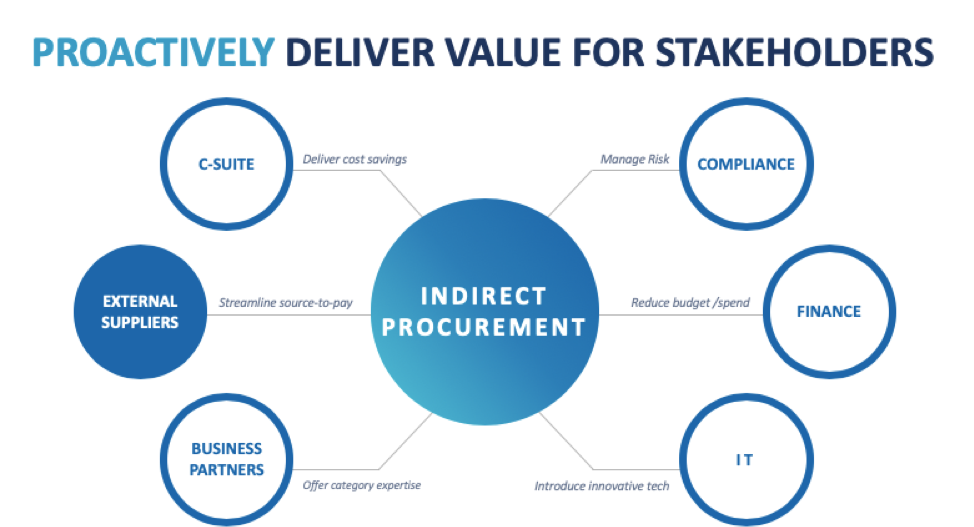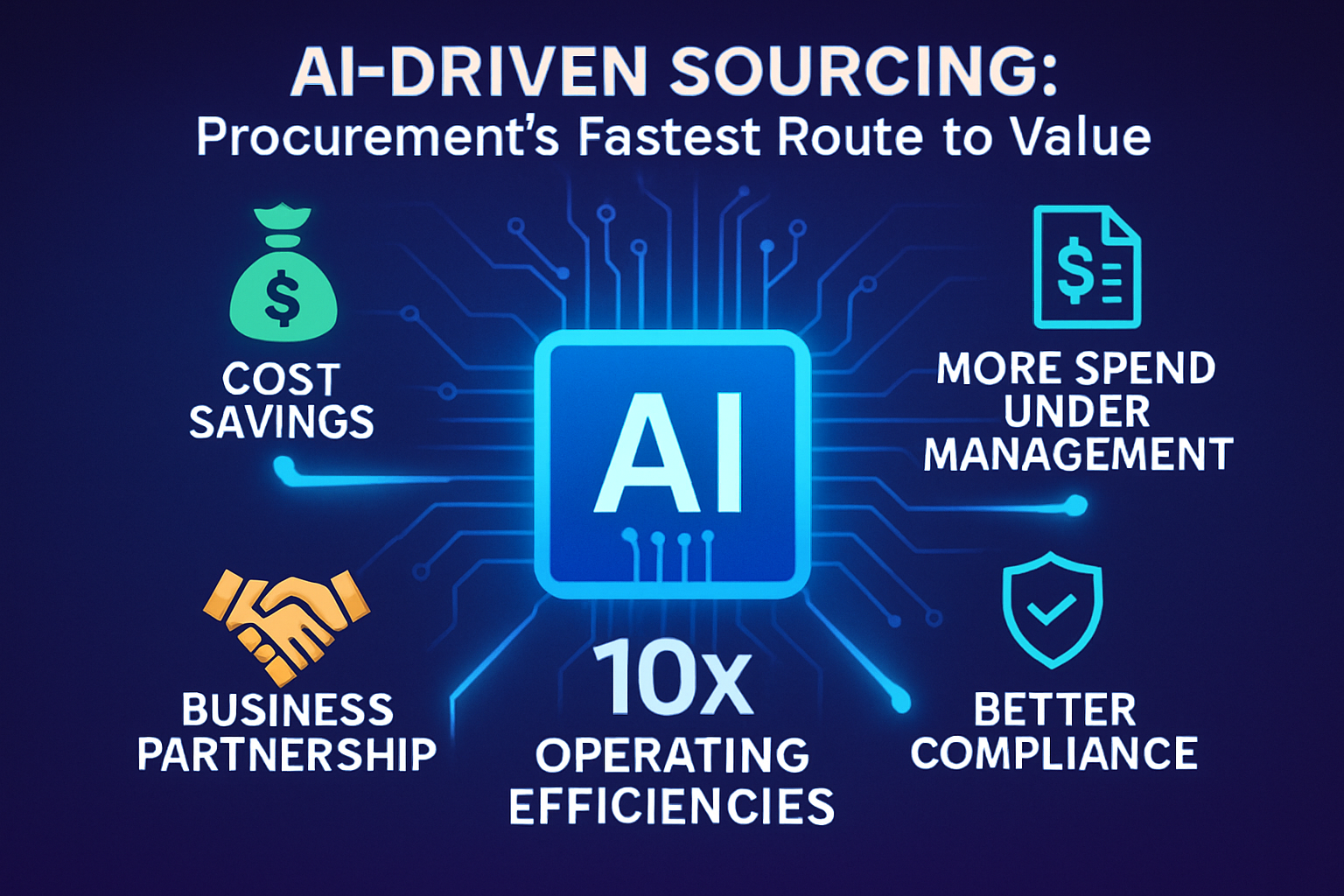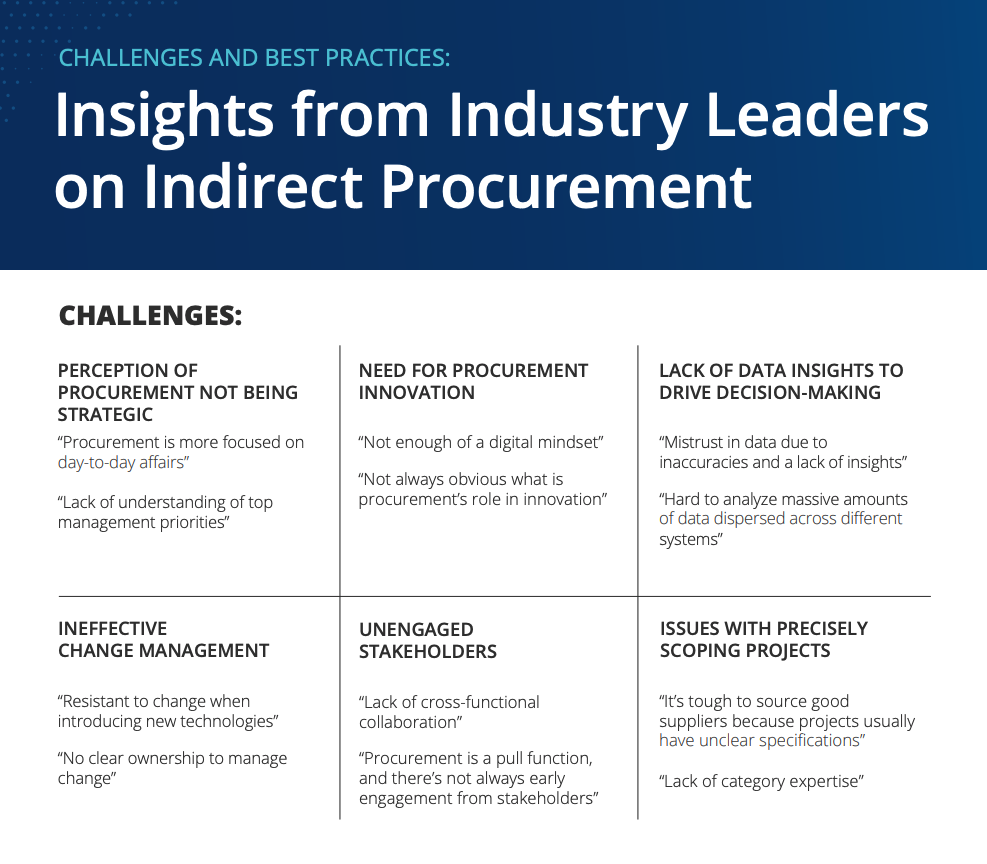Be the Procurement Innovator

Procurement and innovation don’t have to be at odds. Progressive Procurement leaders are taking charge to make innovation a priority, leveraging technology such as artificial intelligence to drive results beyond cost savings.
Recently, at the Procurement Leaders Indirect Category Conference, I had the opportunity to share some tips about how Procurement teams can lead innovation in their company by leveraging design thinking principles. I was amazed at the engagement from the incredible audience, and it showed how much Procurement is ready to lead change.
Here are some actionable steps procurement teams can take to transform for the better:
TIP #1: CREATE URGENCY TO INNOVATE
Think about how your calendar has played out for the last three months. I am sure it was filled with many meetings. Now think about how many of those meetings were about running the business vs. transforming how you run the business. The overwhelming majority of the audience at my conference session shared that they spend their time running day-to-day procurement business. That’s not OK, and we have to change that.
It is critical to create an environment, a mindset, and to carve out time to bring innovation with the help of technology. The time is now. There is no waiting for tomorrow.
“Courage is doing what you are afraid to do.” —Eddie Rickenbacker, WWI
This quote from Eddie is a great one to keep in mind—we are all afraid of technology and change to some extent. Steve Chang, a military veteran on my team, is a constant reminder for all of us that courage is doing anything that we are afraid to do.
Speaking of technology and changes we are afraid of, automation is inevitable despite uncertainty it may currently be raising. A Gallup study shows that 85 percent of Americans use apps, from streaming services to ride-sharing apps—all of which already make healthy use of AI.¹
AI is proven to boost productivity, and we have to start investing in upskilling employees so technology can be complementary to human efforts. As just one example, Amazon is driving tremendous efficiency with robotics. The retail giant sees human and robotics collaboration as a key enabler, where robots will do the heavy lifting and human’s cognitive ability will be better leveraged—a perfect symphony of humans and machines.
This report from Accenture states that the impact of AI technologies on business is projected to increase labor productivity by up to 40 percent—enabling people to make more efficient use of their time.²
After watching Globality’s AI in action and hearing feedback from our clients, it is clear that AI successfully performs the tasks of a human at a scale and speed that humans can never reach. Our human brain is biased, our operational capacity is limited, and our memory is finite—whereas the power of AI provides unlimited operational capacity. The machine never gets tired, it has infinite memory, and not just that—the unbiased decisions it can make while analyzing and learning from millions of data points is something humans can never do. That is the reality.
An AI system should be your next hire to really boost the capabilities of all your existing teams.

I recently listened to this debate at Intelligence Squared (“Can AI change your mind?”) where an AI system debated a human on the topic of subsidizing preschool. It is mind-blowing to see how the AI system argued brilliantly in favor of the position it was given to support subsidies and contextualized knowledge better than any human could.
This example proves that AI is not a buzzword anymore. It is solving real problems—for both consumers and businesses.
TIP #2: TAKE THE DRIVER’S SEAT AND GO BEYOND THE STATUS QUO
Procurement teams are heroes behind the scenes—but it is time to take the driver’s seat. With the right technology enablement and talent development, you can revolutionize sourcing and more. It is critical to be proactive when it comes to identifying and delivering value for all stakeholders. It starts with empathizing with the stakeholders to understand their pain points, collaboratively define the problems, brainstorm ideas, and test them quickly.

Instead of Procurement being pulled in different directions, this is about taking control and getting strategic.
TIP #3: DON’T WAIT FOR CHANGE MANAGEMENT—BE THE CHANGE AGENT.
We shouldn’t let change manage us—Procurement teams shouldn’t wait for C-suite executives to come and tell them that they need to automate. This is an incredible opportunity for Procurement to become the change agent.
Here are some actionable steps:
- Take time to assess and understand gaps and opportunities, then strategically analyze them with your team.
- Then go out and look out for technology that could solve for these problems—find an executive sponsor, test and experiment fast to see if it is indeed going to solve the problem, and be a game changer.
- If you see potential and are ready to implement, it’s critical to invest heavily to bring all stakeholders along on this journey.
- Lastly, identify how to measure success: implement, measure, and keep innovating.
Following my session at the Indirect Procurement Conference, we had an engaging workshop where Procurement teams applied the design thinking process and brainstormed challenges and solutions. The top challenges included driving better decisions and stakeholder engagement, as well as issues with project scoping and change management. Procurement leaders in attendance came up with creative solutions for these. You can see the results here: Procurement Innovator Workshop - Challenges and Best Practices.
Indirect Procurement has to be nimble and accelerate its transformation from a ship to a speedboat. To achieve this transformation, Procurement teams need to take charge, disrupt themselves, and lead innovation for their organizations.
¹ Reinhart, “Most Americans Already Using Artificial Intelligence Products,” Gallup, March 6 2018
² Purdy, Daugherty, “How AI Boosts Industry Profits and Innovation,” Accenture, 2017
***********************
Jay Krishnan is VP of Product Marketing at Globality.




